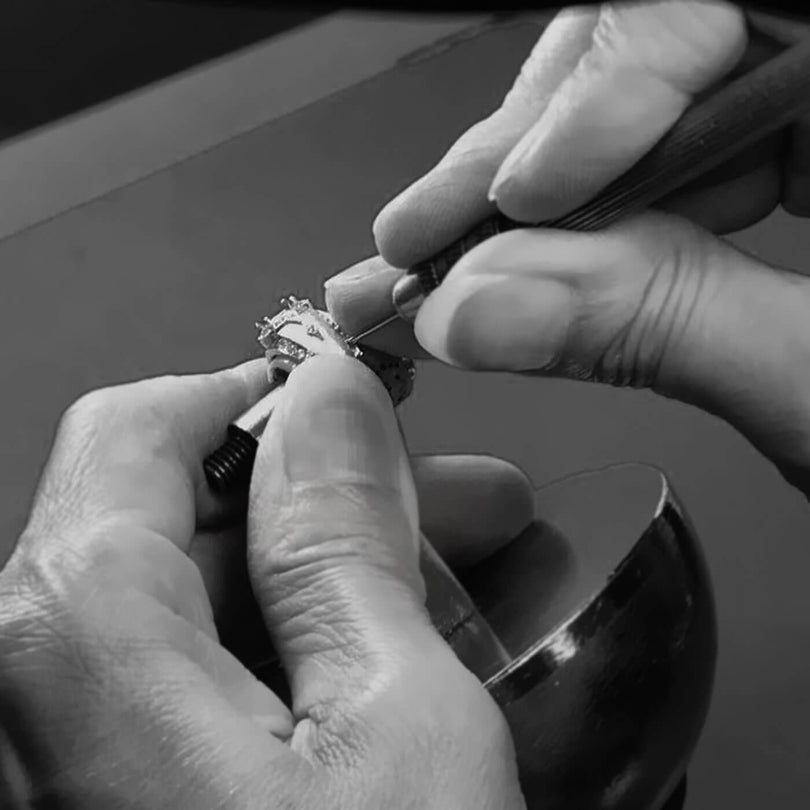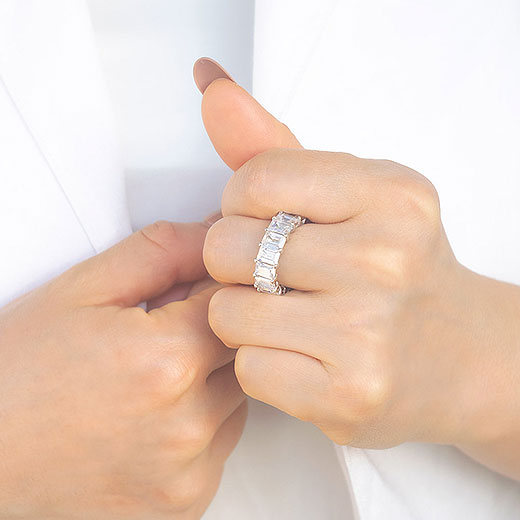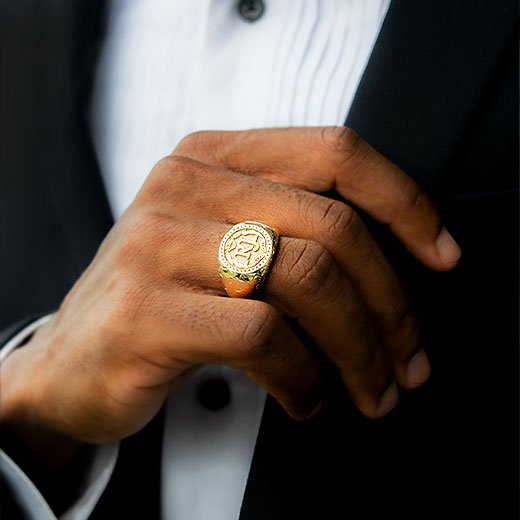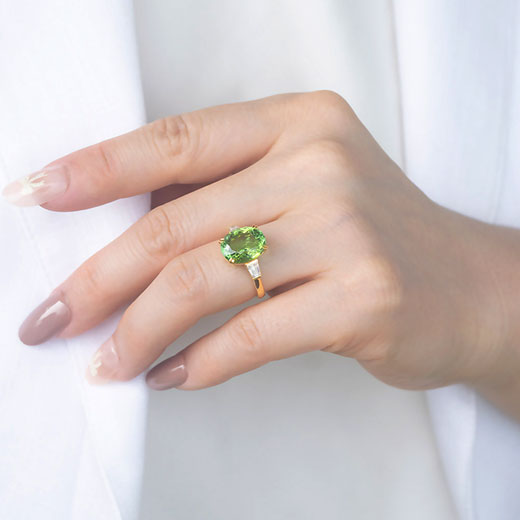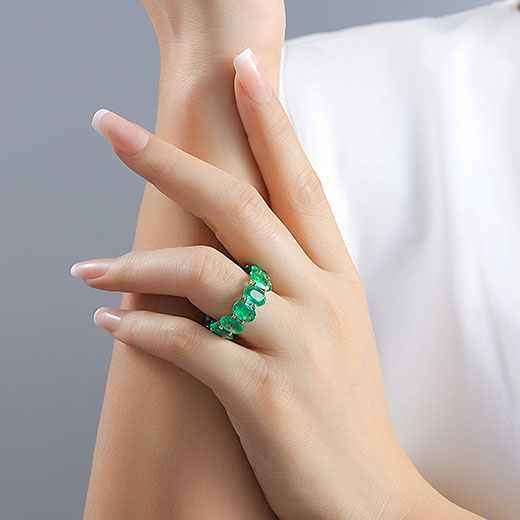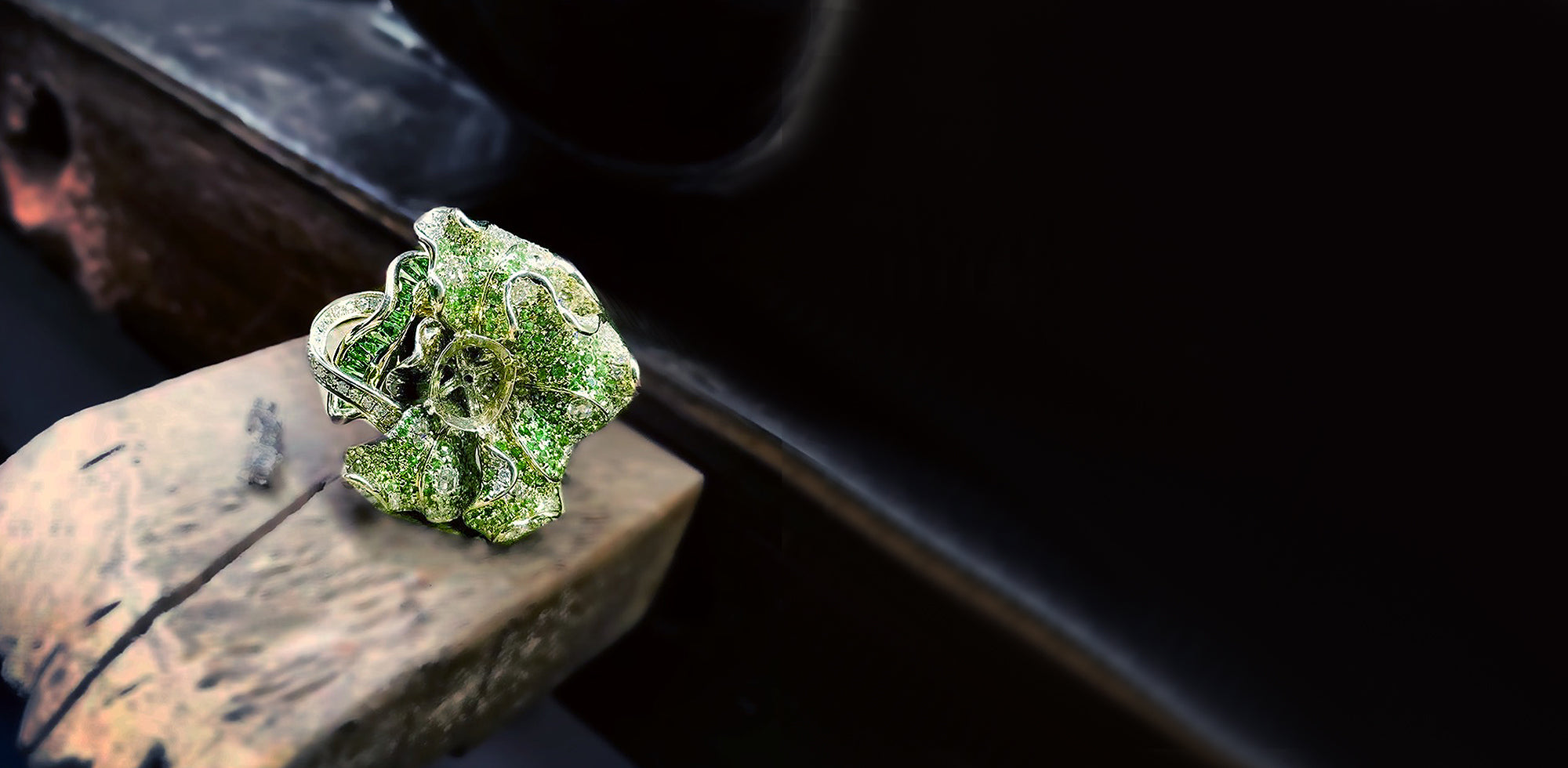Lab Diamond, also called "Man-Made Diamond," is created in a laboratory rather than in the crust of the Earth. Another name for this type of diamond is "man-made diamond." A Lab-Grown Diamond and a natural diamond have the exact physical properties, and chemical properties and are optically identical.
Therefore, a Lab Diamond has the same appearance, brilliance, and sparkle as a naturally mined diamond. Both have the same hardness of 10 on the Moh scale, high thermal conductivity, etc. Advanced Laboratory tests are the only way to determine whether the diamond in question was grown in a laboratory or made by nature. Diamonds that occur in nature are formed around 160 kilometers below the surface of the Earth amid the crushing pressure and extreme heat of the Earth's mantle. The majority of natural diamonds were created between 1 billion and 3 billion years ago, when the temperature of our planet was higher than it is now.
Diamonds made in a laboratory are formed through a process similar to that of natural diamond formation. However, the entire process takes place in a machine rather than deep within the Earth.
There are two different techniques for cultivating a lab-made diamond. In all cases, one must begin with the "seed" (a thin, flat slither) of an additional diamond. The first lab diamond was produced with the help of a High-Pressure, High-Temperature (HPHT) system. This method requires the seed to be placed in a chamber with an amount of pure graphite carbon and heated to approximately 1,500 degrees Celsius, and subjected to pressures of about 1.5 million pounds per square inch.
Recently, a process known as Chemical Vapor Deposition (CVD), another method for growing diamonds(lab made diamonds), was identified. This is accomplished by placing the seed in an enclosed space surrounded by carbon-rich gas and heating it to 800 degrees Celsius.
When conditions are like these, gases will begin to "stick" to the seed, which will result in the growth of a diamond carbon atom by atom.
In recent years, significant strides have been made in the technology that underpins lab diamonds. These advancements have enabled businesses to cultivate diamonds of a greater quality more quickly and at a lower cost. It has led to an increase in competitiveness between companies that mine diamonds and those that produce lab diamonds. According to a paper that was commissioned by the Antwerp World Diamond Center, the current cost of making a CVD lab-grown diamond ranges from $300 to $500 per carat, which is a significant decrease from the 2008 cost of $4,000 per carat (AWDC).
The use of lab-grown diamond jewelry is becoming an increasingly popular trend in the diamond industry. According to the data published by the AWDC, the number of young people who purchase diamonds does so for a variety of reasons, including pricing, transparency, and their high environmental impact. This sector of the market is growing by between 15 and 20 percent each year. The expansion is anticipated to continue as a result of the establishment of additional laboratories and an increase in the number of jewelers that sell lab-grown diamonds.
There is no dispute that lab diamonds are tough enough to be used for a diamond ring. On the Mohs scale, lab made diamonds have the same mineral hardness rating as diamonds extracted from the earth: 10. For everyday rings like engagement rings and wedding bands, the majority of jewelry brands recommend a Mohs scale of 9 or above. This is a simple test that lab-grown diamonds can easily ace, as evidenced by their perfect score of 10 out of 10.
Environmental Credentials and Humanitarian Costs
However, laboratory grown diamonds are not perfect in every way. It is difficult to gather precise statistics to compare the carbon footprints of mined versus lab-grown diamonds due to the noticeable lack of openness that exists in the industry; yet a large amount of energy is required to One report reveals that the greenhouse gas emissions produced by mining natural diamonds are three times less than those formed while creating diamonds in a lab.
A diamond that is grown in a laboratory is every bit as real as a diamond that is extracted from the ground. They are created under the same temperature and pressure settings and have the same physical and chemical attributes, but they do not include the violence and questionable ethical activities that are frequent in some diamond mines. In point of fact, lab-grown diamonds typically have a higher grade overall due to the carefully regulated atmosphere and meticulously observed manufacturing procedure. The following are some of the primary benefits associated with purchasing a lab-grown diamond:
- more stunning as a result of its superior, more brilliant brilliance and higher purity.
- fewer flaws
- Eco friendly
- Greater affordability
- Colors that are rarely found in nature can be created, making unique and coveted pieces more obtainable.


